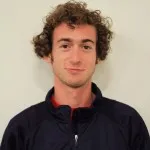
The peoples of medieval Europe built their cities around immense cathedrals — their own humble homes dwarfed by the house of God, its spires and pinnacles pointed skyward to redirect the eyes from the mundanity of earth to the glories of heaven. The Romans placed the enormous Colosseum at the center of their capital, an edifice of public entertainment in the heart of an empire of “bread and circuses.” Nazi Germany crushed its population under the gargantuan weight of an architecture of militantly straight lines and implacable granite immensity, subsuming the individual man in the great mass of “Völkisch” oneness.
As I prepare to leave this place after four years, I cannot help but wonder if we might locate at least part of the elusive, hard-to-define Stanford spirit — the spirit the New Yorker tried to capture this year, the spirit that animates this University’s innumerable accomplishments and triumphs, the spirit that courses through the veins of every student and alumnus — in our architecture as well.
Perhaps in the ever-flowing stream of creative destruction that razes old buildings and erects bigger and better ones, we could discern Stanford’s dedication to the intellectual cutting edge, to the perpetual abandonment of old ideas in the pursuit of new knowledge. In the essential sameness of the Main Quad, unchanged amid the unending upheaval of the rest of campus, we might see Stanford’s dedication to the core principles of a liberal education given physical form — a recognition that as new technologies change the world, the fundamental questions of humanity stay the same.
We have countless gyms for a community driven by fitness and appearance; an enormous new business school to give concrete form to our restless entrepreneurialism; community centers for a diverse student body that hails from around the world and from every corner of society, economy and sexuality.
But some unanswered questions remain. I cannot help but wonder if our architecture might symbolize our community’s imperfections as surely as it does our successes.
There is, for example, no community center, or any dedicated space at all, for Stanford military veterans. Might that symbolize a troubling gap in our commitment to diversity and inclusion — on a campus where, all too recently, there were only seven undergraduate veterans out of a student body of some 6,800?
Everywhere we see sandstone, Spanish mission architecture, red-tiled roofs — conformity. As represented by the battle over Chi Theta Chi this year, are we uncomfortable with true, as opposed to superficial, human difference, or deeply alternative notions of what constitutes a life well lived?
What does it mean that at the very heart of our thoroughly secular campus lies a church? Is MemChu simply an paradox, a bizarre antiquation out of place in and unsuited for the rigors of an uncomfortable modernity? Or does it reflect the unacknowledged presence of an enduring faith in universal progress, reason, the fundamental and ineradicable goodness of man?
At an event for returning alumni during Homecoming Weekend this year, a particularly thoughtful audience member spoke eloquently on the essential importance of place, arguing that there was something special, indefinable but real, about this campus, something he simply felt and knew every time he returned to Stanford. He worried that the proposed expansion to New York City might irretrievably alter the character of this University, even if the same faculty, students, classes, donors and sponsors inhabited and supported our East Coast branch. There would be, he feared, something missing there. Something lost.
I cannot help but agree. Stanford somehow retains its essential identity even as its constituent parts — the students, faculty and staff who give it life — uproot themselves and move on. This place is defined by more than the people who, for a fleeting moment or two, occupy its dorms and classrooms, its dining halls and auditoriums. Stanford — whatever that is — cannot be replicated, moved, copied or imitated. It is here and only here.
In addition to the buildings and the campus, however, we are Stanford as well. Wherever we go, there, too, will Stanford go. We will carry it with us always, imperfections and all.
Miles has been honored to have the opportunity to write this year, and to hear your comments and criticisms. Email him any last words anytime at milesu1 “at” stanford “dot” edu.